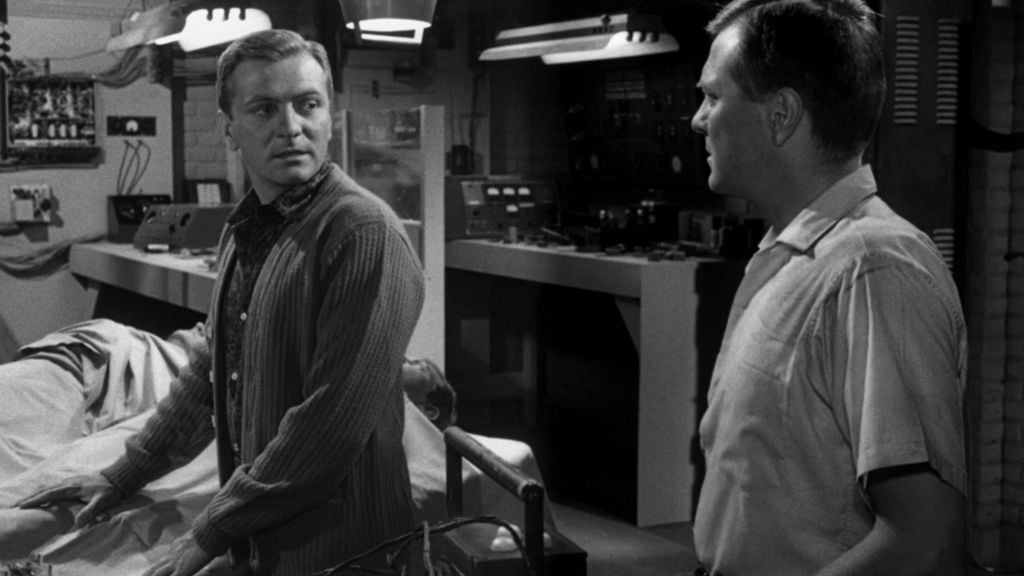In the 1970s, The Six Million Dollar Man and The Bionic Woman captivated audiences with their thrilling stories of technological transformation.
Steve Austin and Jaime Sommers weren’t just crimefighters — they were icons of a sci-fi revolution.
The shows imagined a world where technology could augment human capabilities, turning ordinary individuals into extraordinary heroes.
But beneath the action and gadgets, they explored something deeper: the emotional toll of being superhuman.
Now, decades later, we’re living in a world that feels closer to their fiction than ever before. Advances in AI, robotics, and bionics are bringing the “bionic dream” to life.
From Elon Musk’s neural chips aiming to help people with paralysis to advanced prosthetics controlled by neural interfaces, we are approaching a future that was once the stuff of sci-fi.
Wearable exoskeletons are enabling those with limited mobility to walk again, and augmented reality (AR) is redefining how we perceive and interact with the world around us.
These developments show that the line between human and machine is rapidly blurring.

But as we edge closer to a reality where the line between human and machine blurs, these 70s classics feel more relevant than ever — not just for their tech predictions but for their exploration of what it means to be human.
Superhuman at a Cost: The Humanity of the Bionic Duo
For all their superhuman feats, Steve Austin and Jaime Sommers were deeply human characters.
Both struggled with their bionic transformations’ emotional and social implications, making them relatable despite their extraordinary abilities.
After a catastrophic crash, astronaut Steve Austin was rebuilt with bionic limbs and an enhanced eye, becoming a government tool.

While he performed incredible feats, his bionics often isolated him from others.
Episodes like The Six Million Dollar Man Season 1 Episode 12, “The Coward,” showed Steve grappling with guilt and PTSD from his past, reminding viewers that even superhumans carried emotional scars.
Jaime Sommers’ journey delved even deeper into the emotional cost of being bionic.
A devastating accident left her on the brink of death until she was given bionic limbs and enhanced hearing.
Unlike Steve, Jaime initially rejected her new reality, yearning for her former life.

Episodes like The Bionic Woman Season 1 Episode 1, “Welcome Home, Jaime,” explored her struggle to reconcile her humanity with her new identity as a government asset.
Their emotional arcs weren’t just compelling — they were ahead of their time, foreshadowing modern sci-fi’s focus on advanced technology’s ethical and personal implications.
The technology in The Six Million Dollar Man and The Bionic Woman felt like pure fantasy in the 1970s, but much of it has become eerily prescient.
Bionic limbs like Steve and Jaime’s, which gave them superhuman strength and speed, have parallels in today’s robotic prosthetics, now controlled by neural interfaces that allow users to regain natural movement.

Steve’s bionic eye, with its superhuman sight, finds echoes in modern retinal implants and augmented reality devices pushing the limits of human vision.
The idea of wearable exoskeletons for mobility, which once seemed a futuristic fantasy, is now a growing field, helping people with disabilities stand and walk again.
Episodes like the Bionic Woman Season 2 Episode 20, “The Bionic Woman: Part II,” where Jaime struggles with her enhanced hearing, reflect the duality of these advancements.
While bionics can improve lives, they also raise questions about control, consent, and what it means to live with technology that fundamentally changes one’s identity.
These questions continue to surface in the modern tech landscape, especially with the rise of AI and cybernetic enhancements.

The Twilight Zone Connection: Early Sci-Fi Pioneers
Long before The Six Million Dollar Man, sci-fi classics like The Twilight Zone paved the way for exploring humanity’s relationship with technology.
On The Twilight Zone Season 4 Episode 1, “In His Image,” a man creates a robot duplicate of himself, raising questions about identity, ethics, and the consequences of playing God.
These themes directly relate to Steve and Jaime’s journeys, in which technology enhances their lives and places them in morally ambiguous situations.
Audiences loved The Twilight Zone, but the show also became a roadmap for the emotional dilemmas that would define sci-fi for decades to come.

A Vision for the Future: Sci-Fi as a Blueprint
The Six Million Dollar Man and The Bionic Woman entertained audiences as well — and also inspired them.
The concept of bionics popularized the idea of human augmentation, sparking interest in robotics, prosthetics, and AI.
Engineers and scientists have often cited sci-fi as a key influence on their work, and these shows brought the idea of superhuman abilities into the mainstream.
Companies today are building on these ideas, with neural interfaces and wearable exoskeletons becoming tangible breakthroughs.
Beyond their technical vision, the shows helped normalize discussions about integrating technology into human lives, paving the way for modern stories like Black Mirror and Ex Machina.

The bionic duo’s impact extended far beyond their original run, shaping how pop culture explores the balance between humanity and technology.
While the technology imagined by these shows is becoming real, the ethical questions they pose remain as relevant as ever.
Today, as AI and cybernetics advance at supersonic speeds, we’re forced to confront dilemmas similar to those faced by Steve and Jaime.
How much of your humanity is lost when machines define your abilities? Who owns the technology inside you — corporations, governments, or you?

And, as seen in Jaime’s struggle with her enhanced hearing, what does it mean to live with upgrades that fundamentally change your perception of the world?
Real-world users of advanced prosthetics face challenges like phantom pain, social stigma, and the psychological adjustment of living with life-changing technology.
These struggles mirror the dilemmas that Steve and Jaime faced decades ago, proving that their stories were not just sci-fi fantasies but prescient explorations of what it means to be human in a tech-driven world.
Why The Bionic Dream Still Matters

The Six Million Dollar Man and The Bionic Woman were products of their time, but their themes have never been more relevant.
As we stand on the brink of a bionic future, these shows remind us that technological progress is a double-edged sword.
Their legacy isn’t just about predicting today’s tech — it’s about showing us the cost of becoming superhuman.
They challenged us to consider what makes us who we are and what we’re willing to sacrifice for progress.

The bionic dream is alive and well in a world hurtling toward AI and augmented reality. But as Steve and Jaime taught us, it’s not just about what we can do with technology — it’s about who we become because of it.
As we look ahead to a future where bionic technology and AI play an increasingly important role, it’s worth asking: are we ready for the emotional and ethical complexities that come with it?
What do you think — are we headed toward a Six Million Dollar Man or Bionic Woman reality? How do you feel about the emotional toll of technological advancements on humanity?
Share your thoughts in the comments below, and let’s dive into the conversation about the future of tech, identity, and what it means to truly be human.
Do you think we're ready for a bionic future ala Jamie and Steve?
The post The Bionic Dream: How ‘70s Sci-Fi Predicted Today’s Tech and the Emotional Toll of Superpowers appeared first on TV Fanatic.
Source: TV Fanatic



